Communications of the ACM
US-BLS: Computing Employment Outlook Remains Bright

Joel Adams, Calvin College
Predicting the future with 100% certainty is never possible, but every two years, the U.S. Bureau of Labor Statistics (US-BLS) tries, releasing its Employment Projections (EP). This report contains the bureau's best-effort prediction about the U.S. employment trends for the next decade, based on current observations and available knowledge about the future.
Among other things, the EP tries to estimate the numbers of:
- New Jobs: jobs that did not exist before, representing economic growth.
- Total Jobs: New Jobs plus jobs replacing people who retire.
In its latest report, the US-BLS projects that for both New Jobs and Total Jobs, the majority of the STEM career opportunities will be in computing. The following table provides a side-by-side comparison of their projections: The left chart presents their New Jobs projections and the right chart presents their Total Jobs projections for various STEM careers:
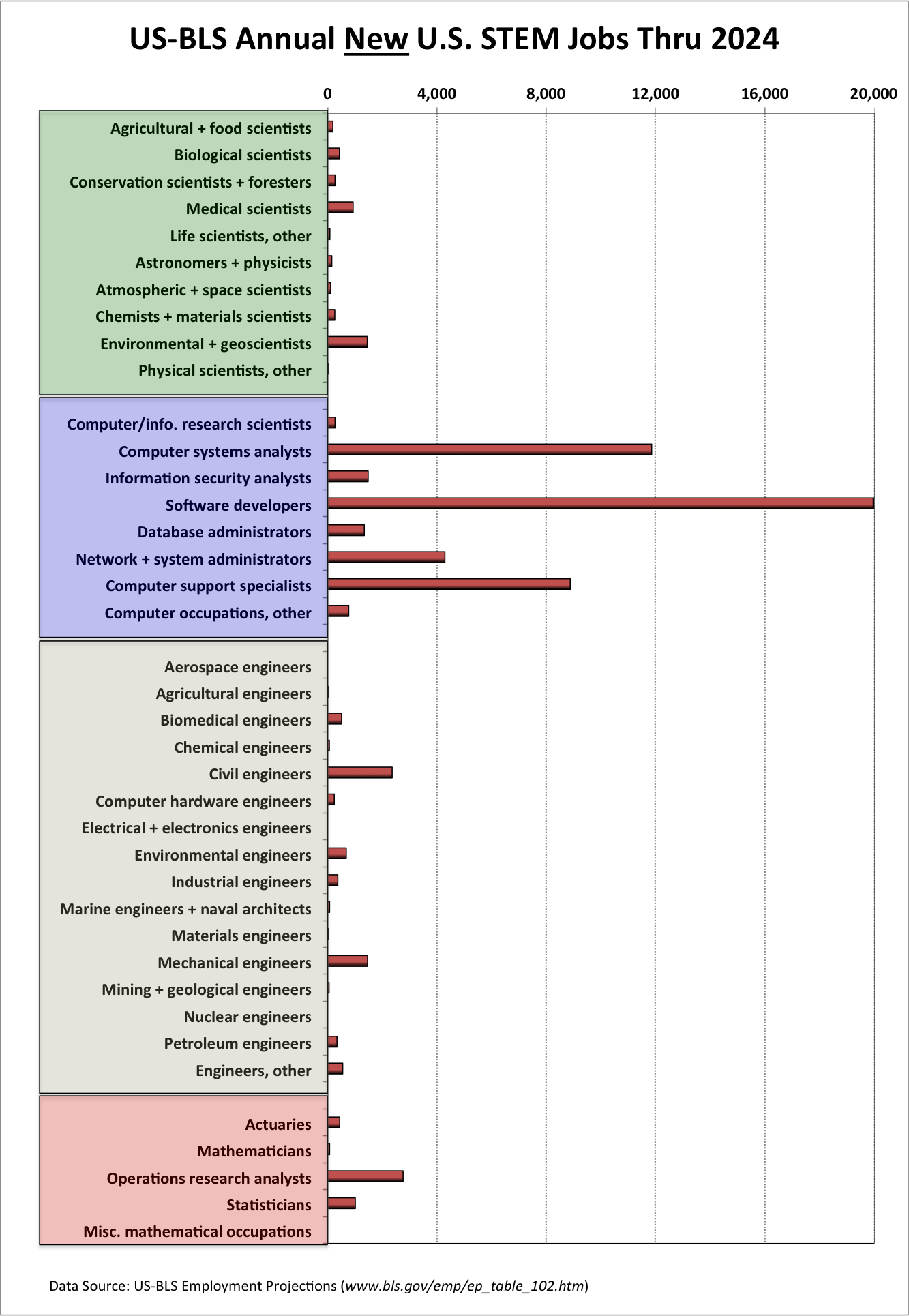 |
 |
(Click on either chart for a larger image.)
As you can see from the chart on the left, the US-BLS predicts the four STEM careers with the most growth will all be in computing.
More precisely, the US-BLS predicts that each year between now and 2024, there will be nearly 20,000 new software development jobs, nearly 12,000 new systems analysts jobs, over 8,000 new computing support jobs, and over 4,000 network/system administration jobs. No other STEM area is expected to generate even 4,000 New Jobs per year.
The chart on the right shows that even when retiree replacements are considered, the top four careers with the most opportunities remain the same: software development, systems analysts, computing support, and network/systems administration. But the chart on the right does paint a somewhat more encouraging picture for some non-computing STEM careers (e.g., civil and mechanical engineers). The contrast between the left and right charts indicates that the majority of those non-computing jobs will be replacing retiring baby boomers, not new jobs created by economic growth.
If we aggregate these US-BLS projections to see the number of jobs per year in each STEM area, we get the following charts:
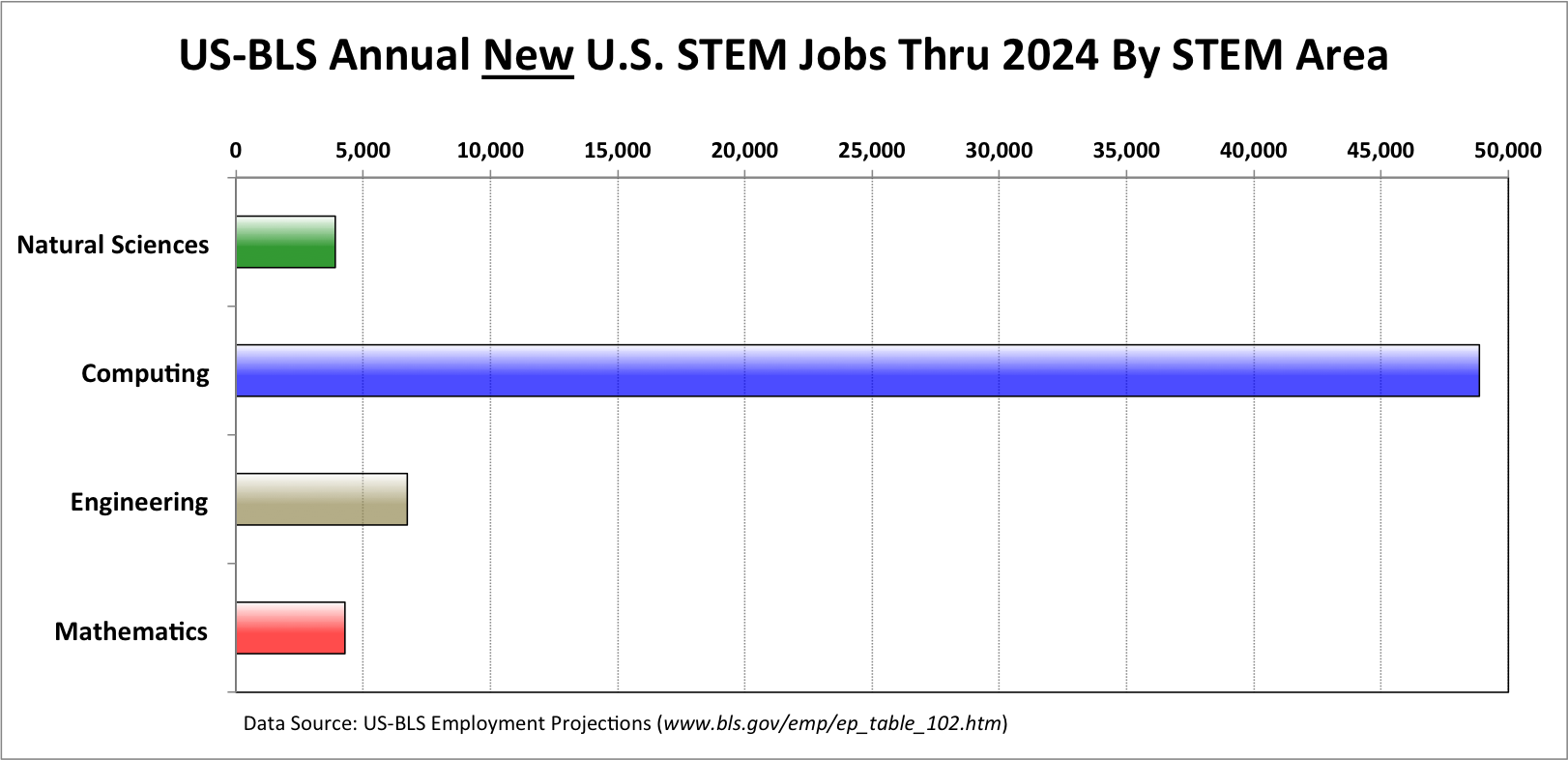 |
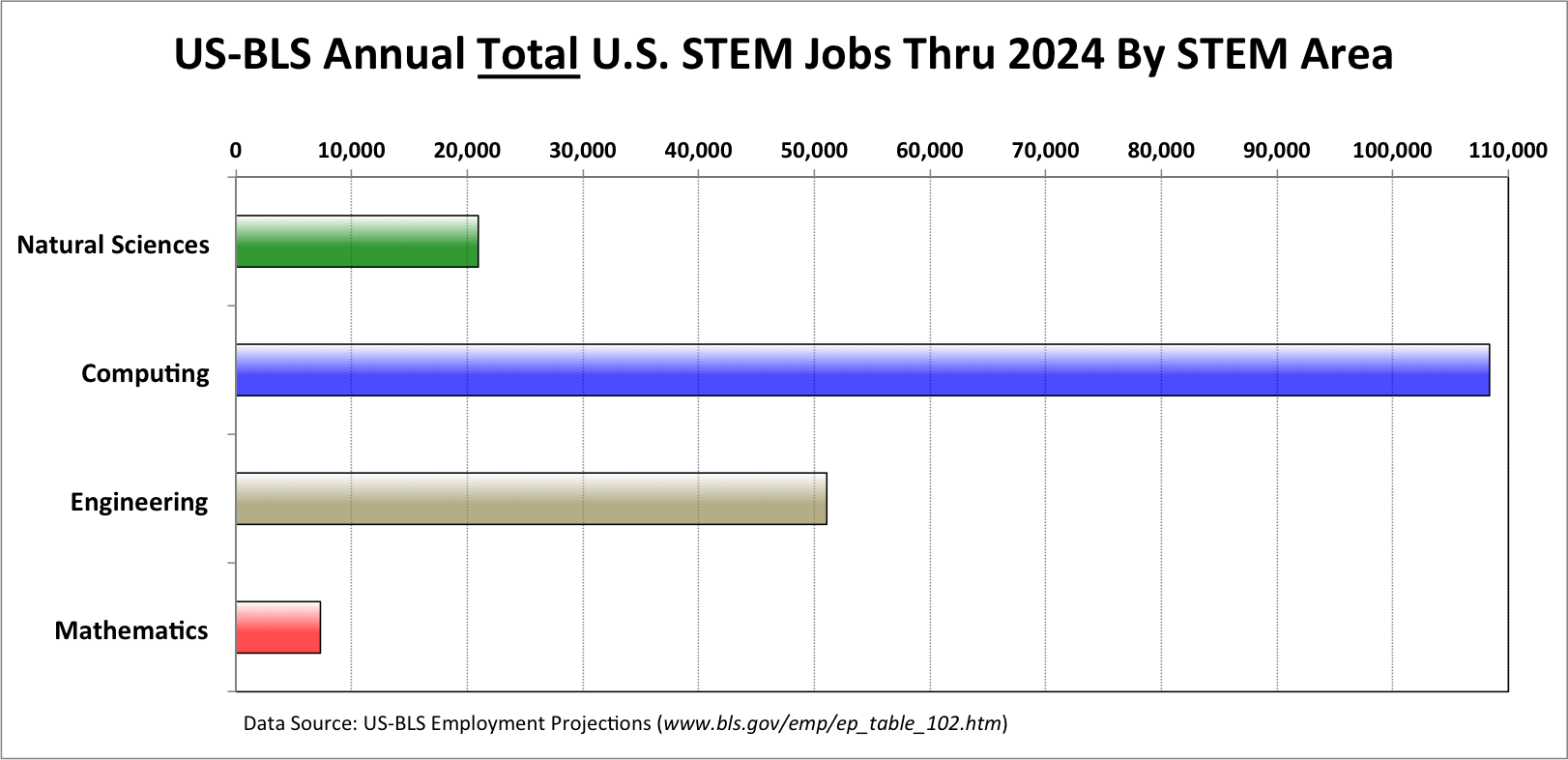 |
(Click on either chart for a larger image.)
If we take those aggregate numbers and represent them as percentages of all STEM job opportunities, we get the following two charts:
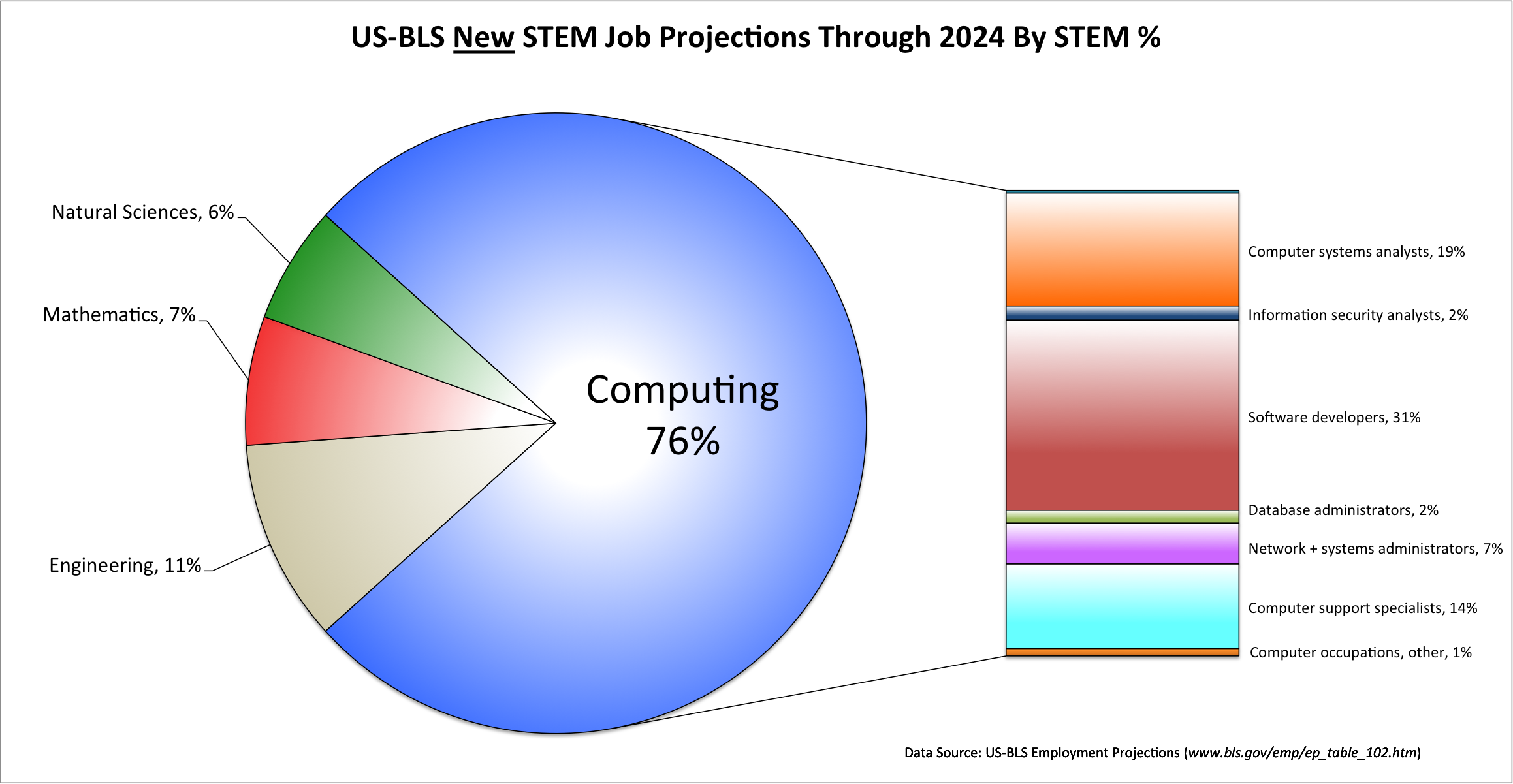 |
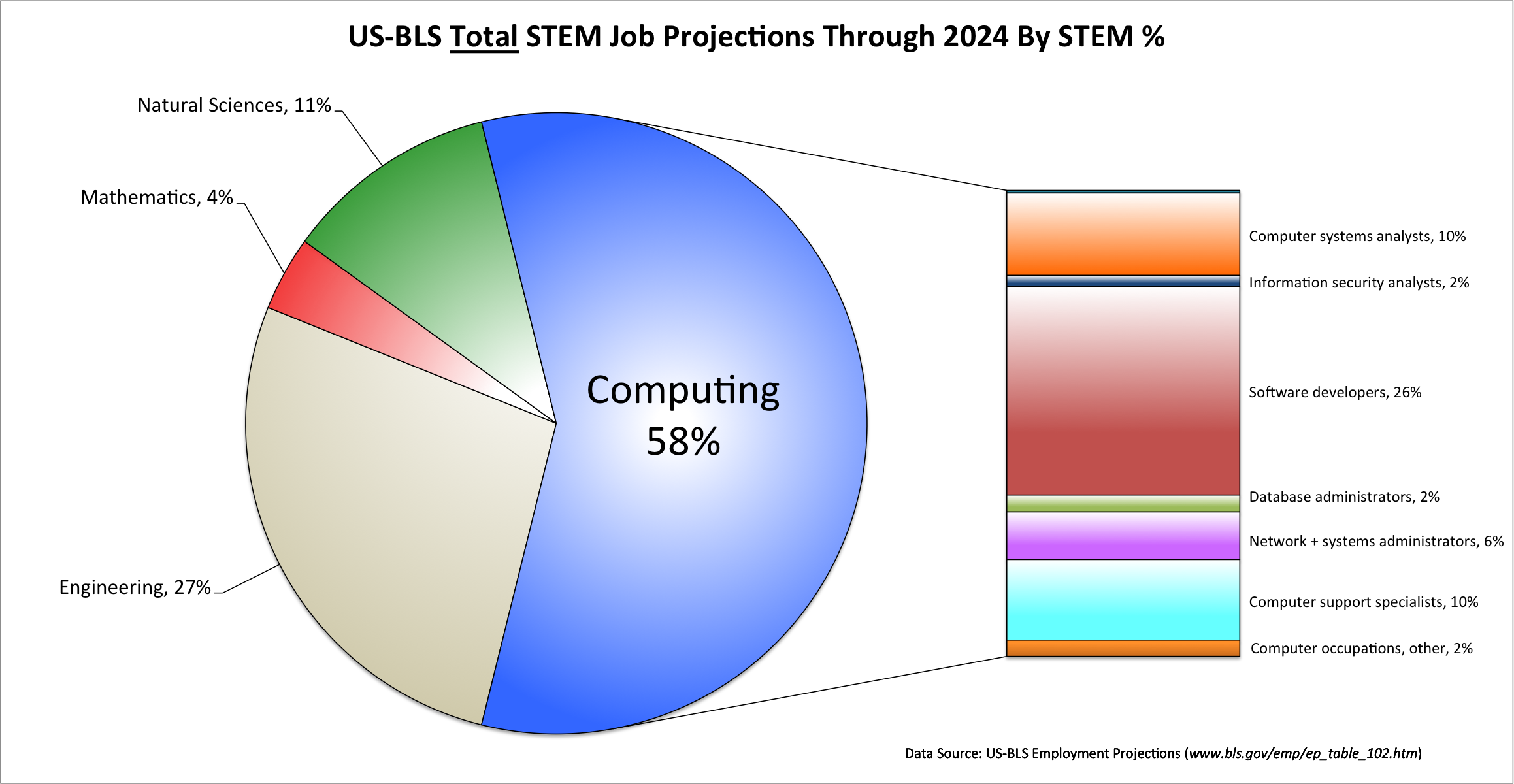 |
(Click on either chart for a larger image.)
For the foreseeable future of science, technology, engineering, and mathematics jobs in the US, the US-BLS predicts more than 3 out of 4 new job openings and nearly 3 out of 5 total job openings will be in computing! It is worth mentioning this is not a fluke -- these numbers are fairly consistent with those from two years ago.
What kind of "computing" careers are these? The expansion area to the right of each pie-chart breaks down the "computing" job openings into the different career categories, and shows the variety of careers that are available for students who study computing. As can be seen in the chart on the left, the US-BLS is predicting 31% of the new STEM jobs will be in software development (aka software engineering) alone as compared to 11% in the combined branches of traditional engineering! With respect to total jobs, the chart on the right predicts there will be nearly as many openings in software development as there will be in all the branches of traditional engineering combined.
Why will there be so many software development/engineering jobs?
- One reason is that manufacturers are increasingly embedding computers into every day items like automobiles, refrigerators, ovens, water heaters, and so on; the result is being called the Internet of Things (IoT). While the computers embedded in these devices will be mundane commodity hardware, the devices will require secure, custom software to do anything useful. Designing, writing, and maintaining that software will create a sustained demand for software developers and systems analysts. These devices will be connected to the Internet, will transmit data across it, and this data will be stored in databases, creating demand for networking professionals and database administrators. When things go wrong, people will need technical support, creating demand for support specialists.
- Another reason is the mobile computing market. Many companies want "native" apps written in Swift or Objective-C for devices running Apple’s iOS operating system, apps written in Java for devices running Google’s Android operating system, or both. Other companies want web-apps written in HTML5, CSS, and Javascript that run in the browser on either kind of device. Either way, the mobile computing market is creating a huge demand for software developers.
Together, the Internet of Things and mobile computing are creating a massive demand for people with advanced computing skills, especially in software development.
Note that basic computer literacy (i.e., being able to use Microsoft Windows, Word, Excel, or Powerpoint) or CAD-design skills will not qualify you for one of these careers. Most of these jobs require the kind of advanced computing skills that you will only gain by studying computer science, information systems, and/or software engineering.
In his 1993 book Outliers, Malcom Gladwell argued that anyone who practices a skill for 10,000 hours can master that skill. If that is even partially true, then it follows that if (for example) you are a student wanting to prepare yourself for one of those numerous careers in software development, your best strategy is to choose a college major that will give you lots of practice actually developing software.
However, employers also place a high value on communication skills, collegiality, being able to work in groups, and other "people" skills. To maximize your career opportunities, choose a college or university that will help you develop these skills to complement the technical skills. Your technical skills may get you that first job; your people skills will play a large role in determining your career trajectory.
In summary, the US-BLS projections tell us that for the foreseeable future, most of the STEM career opportunities will be in computing. (Those of us who teach undergraduate computer science and see the demand for our graduates know that this is already the case.) If you know a young person who is interested in STEM, encourage them to seriously consider a career in computing, as the indicators are that it will offer the most career opportunities for the foreseeable future.
No entries found